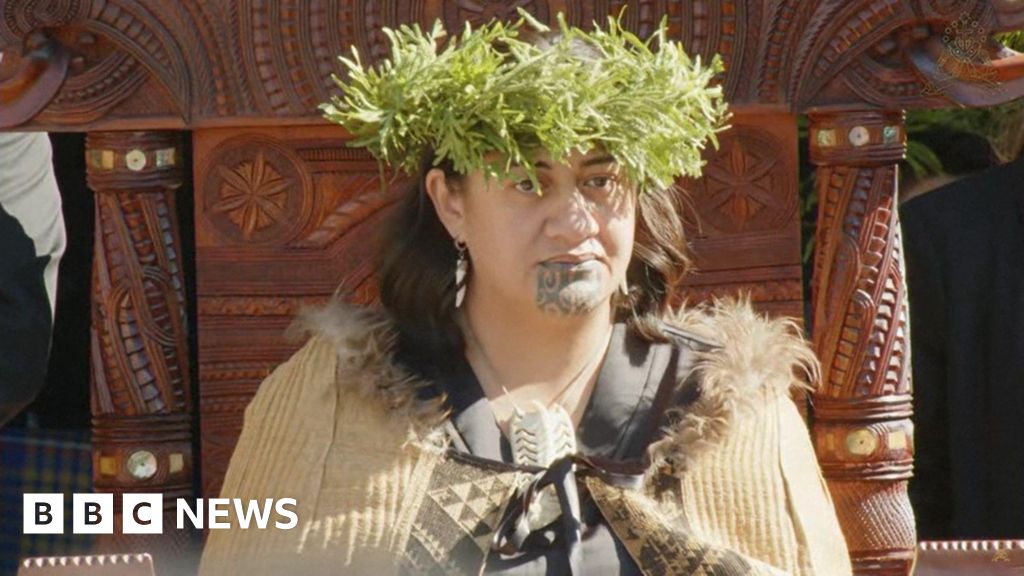
A new queen was crowned as the eighth Māori monarch in New Zealand as her father, King Tuheitia Pōtatau Te Wherowhero VII, was laid to rest.
Twenty-seven-year-old Ngā Wai hono i te pō was chosen as Kuini by a council of New Zealand’s indigenous Māori chiefs during an elaborate ceremony in the country’s North Island.
She is only the second Māori queen, the first being her grandmother, Te Arikinui Dame Te Atairangikaahu.
Ngā Wai hono i te pō is the youngest child of King Tuheitia, who died last Friday at the age of 69.
Sitting on a carved wooden throne, the new queen was announced at a gathering at Tûrangawaewae Marae, which is the seat of the Kiingitanga or Māori king movement.
She sat in front of her father’s coffin, wearing a wreath and a cloak as prayers and chants were performed ahead of his burial.
A flotilla of war canoes then transported the king – who laid in state for six days before his burial – to his final resting place on Mount Taupiri, sacred to the Māori people.
The king had been recovering from heart surgery in hospital when he died, just days after celebrating the 18th anniversary of his coronation.
“The death of Kiingi Tuheitia is a moment of great sadness for followers of Te Kiingitanga, Maaoridom and the entire nation,” Rahui Papa, spokesman for the Kiingitanga or Māori king movement said at the time. “A chief who has passed to the great beyond. Rest in love.”
“Our country will be in mourning,” said Chris Hipkins, leader of New Zealand’s opposition Labour party, shortly after the king’s death. “He was a fantastic king with a wicked sense of humour, but also a very good man… with a real focus on bringing New Zealanders together.”
New Zealand’s prime minister Christoper Luxon praised King Tuheitia as a leader “whose commitment to Māori and all New Zealanders has been felt right across the country”.
However, Mr Luxon – whose policies have been accused by some indigenous New Zealanders of being anti-Māori – is on an official trip to South Korea and has not attended the funeral.
Last year thousands of protesters across New Zealand rallied against the government’s plans to reverse policies which boosted Indigenous rights, including plans to close the Māori Health Authority, Te Aka Whai Ora, set up during Jacinda Ardern’s Labour government and to switch the names of some departments from Māori to English.
King Tuheitia’s official period of mourning was extended from the usual three days to seven days, in order to accommodate the huge delegations that came to pay tribute to the king.
“I have never experienced anything like this,” Mereana Hond, a Māori journalist told BBC Newsday.
“It is no small thing to lose a king, but he was just really starting to rise to prominence, leading all tribes of Altara and New Zealand at a time when we’re under a lot of political and social pressure under this coalition.”
The king was born Tūheitia Paki in 1955. He was crowned in 2006 following the death of his mother, Te Arikinui Dame Te Atairangikaahu.
Like his mother, King Tuheitia was seen as a great unifying figure – recently calling on Māori to stand together in the face of policies targeting them.
The Māori monarchy dates back to 1858, when the Māori people decided to create a unifying figure similar to that of a European monarch in order to try and prevent the widespread loss of land to New Zealand’s British colonisers and to preserve Māori culture. The role is largely ceremonial.
